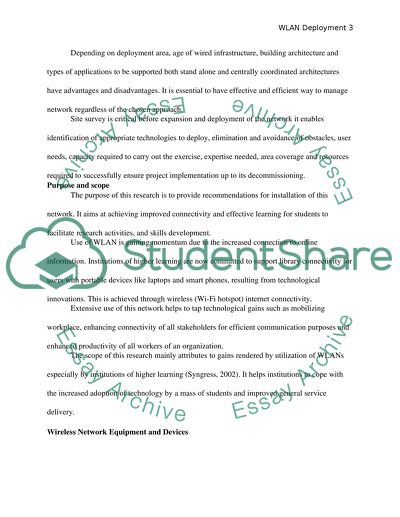Cite this document
(“Wireless Deployment Plan Assignment Example | Topics and Well Written Essays - 2000 words”, n.d.)
Wireless Deployment Plan Assignment Example | Topics and Well Written Essays - 2000 words. Retrieved from https://studentshare.org/information-technology/1621927-wireless-deployment-plan
Wireless Deployment Plan Assignment Example | Topics and Well Written Essays - 2000 words. Retrieved from https://studentshare.org/information-technology/1621927-wireless-deployment-plan
(Wireless Deployment Plan Assignment Example | Topics and Well Written Essays - 2000 Words)
Wireless Deployment Plan Assignment Example | Topics and Well Written Essays - 2000 Words. https://studentshare.org/information-technology/1621927-wireless-deployment-plan.
Wireless Deployment Plan Assignment Example | Topics and Well Written Essays - 2000 Words. https://studentshare.org/information-technology/1621927-wireless-deployment-plan.
“Wireless Deployment Plan Assignment Example | Topics and Well Written Essays - 2000 Words”, n.d. https://studentshare.org/information-technology/1621927-wireless-deployment-plan.


